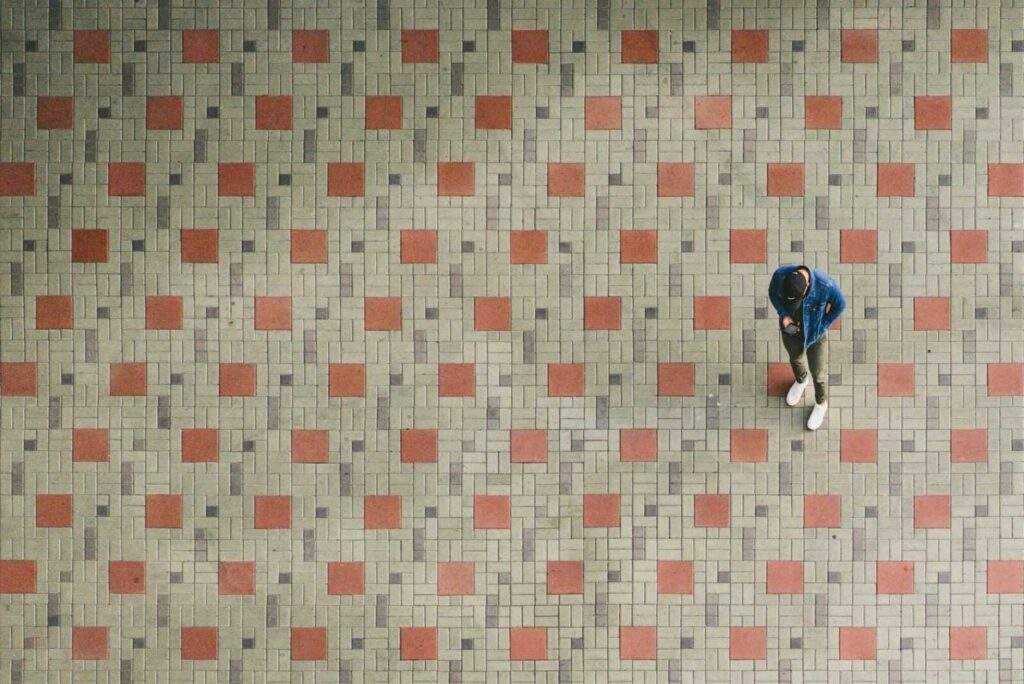Sustainable Flooring Options: Eco-Friendly Materials for a Beautiful and Durable Home

Table of Contents
Imagine a home that seamlessly blends stunning aesthetics with environmental responsibility. A place where every step you take is a testament to sustainability, without compromising on style or functionality. This vision becomes reality with the power of “Sustainable Flooring Options!”
In today’s eco-conscious world, our homes can become testaments to our commitment to a healthy planet. Sustainable flooring isn’t just about sacrificing aesthetics for eco-friendliness; it’s about unlocking a world of beautiful, durable materials that nurture both your home and the environment. From the naturally resilient charm of cork to the sleek sophistication of bamboo, this guide will unveil a treasure trove of sustainable flooring options to suit your style and needs.
Get ready to embark on a journey that will transform your floors from a functional necessity to a canvas of beauty and sustainability. We’ll delve into the key benefits of eco-friendly flooring materials, explore popular options like cork, bamboo, and recycled content flooring, and equip you with the knowledge to make informed choices for your home. So, lace up your eco-conscious walking shoes and join us as we explore the exciting world of sustainable flooring!
Sustainable flooring represents a significant shift in the construction and renovation industry, emphasizing eco-friendly materials that benefit both the environment and homeowners. As global awareness of environmental issues grows, the demand for green flooring options has surged. These materials not only reduce the ecological footprint but also offer numerous advantages for indoor environments and long-term economic savings.
The importance of sustainable flooring lies in its minimal impact on natural resources. Traditional flooring materials like hardwood often involve deforestation and extensive energy consumption. In contrast, sustainable flooring materials—such as bamboo, cork, and recycled options—are sourced responsibly, ensuring that their production does not deplete natural ecosystems. This eco-conscious approach helps preserve forests and reduce greenhouse gas emissions.
Choosing eco-friendly flooring extends benefits beyond environmental preservation. One of the most compelling reasons for homeowners to opt for sustainable flooring is the improvement in indoor air quality. Many conventional flooring options contain volatile organic compounds (VOCs) and other toxic substances that can off-gas over time, leading to health issues. Low VOC flooring options, which are common in green flooring materials, significantly reduce the presence of harmful chemicals in the home, creating a healthier living space, particularly for those with allergies or respiratory conditions.
Additionally, sustainable flooring is often more durable and cost-effective in the long run. Eco-friendly materials such as bamboo and cork offer remarkable resilience and longevity, reducing the need for frequent replacements. This durability translates into substantial cost savings over time, as homeowners invest less in repairs and replacements. Furthermore, these materials are increasingly becoming more affordable, making them accessible to a broader range of consumers.
Overall, the shift towards sustainable flooring materials reflects a growing trend towards eco-conscious living. By selecting green flooring options, homeowners contribute to environmental preservation while enjoying the benefits of improved indoor air quality and long-term economic advantages. This makes sustainable flooring a prudent and responsible choice for modern home design.
Guide to Choosing Eco-Friendly Flooring Materials
When selecting eco-friendly flooring materials, it is essential to consider several key factors that ensure your choices are both sustainable and practical. The first aspect to examine is sustainability certifications. Look for flooring products certified by reputable organizations such as the Forest Stewardship Council (FSC) or the Sustainable Forestry Initiative (SFI). These certifications guarantee that the materials have been sourced responsibly, ensuring minimal impact on ecosystems and promoting the conservation of natural resources.
Material sourcing is another critical factor. Opt for flooring made from renewable resources such as bamboo or cork. Bamboo flooring is highly sustainable due to its rapid growth rate, which allows it to be harvested without causing long-term damage to the environment. Similarly, cork flooring benefits from being harvested from the bark of cork oak trees, which regenerate, making it a renewable and eco-friendly option. Additionally, consider recycled flooring options that repurpose materials like reclaimed wood or recycled tiles, thus reducing waste and lowering the demand for new raw materials.
Durability is a crucial consideration for sustainable flooring materials. Durable and sustainable flooring options not only last longer but also reduce the frequency of replacement, thus minimizing environmental impact. For instance, eco-friendly wood flooring such as reclaimed hardwoods can offer both longevity and a reduced carbon footprint. Moreover, low VOC (Volatile Organic Compounds) flooring options are essential for maintaining indoor air quality, which is particularly important for homes with pets or individuals with allergies.
Maintenance requirements also play a significant role in the selection process. Eco-conscious flooring should be easy to clean and maintain, reducing the need for harsh chemicals that can harm the environment. Sustainable carpet alternatives like wool or sisal are not only biodegradable but also naturally resistant to dirt and stains, making them excellent options for eco-friendly flooring for pets and high-traffic areas.
By carefully considering sustainability certifications, material sourcing, durability, and maintenance, you can make informed decisions that align with both your environmental values and practical needs. Choosing the best sustainable flooring ensures a beautiful, durable home while contributing to a healthier planet.
Sustainable Flooring Options for Bathrooms
Bathrooms, with their constant exposure to moisture and high foot traffic, demand flooring that is not only durable but also environmentally friendly. Fortunately, several sustainable flooring options meet these criteria, offering both functionality and eco-conscious benefits.
Reclaimed wood is a popular choice for eco-friendly wood flooring in bathrooms. Sourced from salvaged timber, it serves as a sustainable alternative to newly harvested wood. Reclaimed wood offers a unique aesthetic with its distinctive grain patterns and weathered look. However, it requires proper sealing to protect against moisture and prevent warping and damage over time.
Natural stone, such as slate, granite, or marble, is another excellent sustainable flooring option. These materials are inherently durable and can withstand the rigors of a bathroom environment. Stone tiles are not only water-resistant but also add a touch of elegance to your bathroom. However, they can be cold underfoot and may require periodic sealing to maintain their integrity and appearance.
Cork flooring is a renewable and eco-conscious option gaining popularity for bathroom use. Harvested from the bark of cork oak trees, it regenerates naturally, making it a sustainable choice. Cork flooring benefits include its softness, warmth underfoot, and inherent resistance to mold and mildew. However, it is essential to ensure that cork flooring is adequately sealed to protect it from moisture damage.
Recycled glass tiles offer a vibrant and eco-friendly flooring option for bathrooms. Made from post-consumer and post-industrial glass, these tiles come in various colors and patterns, adding a unique and contemporary look to your bathroom. Recycled glass tiles are non-porous, making them highly resistant to water and stains. However, they can be more expensive than other options and may require professional installation to achieve the best results.
In conclusion, selecting the best sustainable flooring for your bathroom involves balancing durability, water resistance, and aesthetics. Whether you opt for reclaimed wood, natural stone, cork, or recycled glass tiles, each material offers unique advantages, contributing to a beautiful, durable, and eco-friendly bathroom environment.
Eco-Friendly Tile Options for Kitchens
Kitchens serve as the bustling heart of any home, requiring flooring that is not only durable but also easy to maintain. When considering eco-friendly flooring options for this high-traffic area, tiles made from sustainable materials offer an excellent solution. Among the most popular choices are ceramic, porcelain, and glass tiles, particularly those crafted from recycled materials.
Ceramic tiles are a longstanding favorite for kitchen floors, known for their resilience and varied design possibilities. When sourced from recycled materials, ceramic tiles reduce the demand for new raw materials, thereby minimizing environmental impact. They are also highly resistant to water and stains, making them a practical choice for kitchens where spills are frequent.
Porcelain tiles, a subtype of ceramic, offer additional advantages in terms of durability and aesthetic versatility. Made from a more refined clay and fired at higher temperatures, porcelain tiles are denser and less porous than standard ceramic tiles. This makes them an excellent option for eco-conscious homeowners seeking long-lasting and low-maintenance flooring solutions. Many manufacturers now offer porcelain tiles containing recycled content, further enhancing their sustainability credentials.
Glass tiles, often made from recycled bottles and other glass products, provide a vibrant and eco-friendly option for kitchen floors. These tiles are not only visually striking but also incredibly durable and easy to clean. Glass tiles reflect light, which can brighten up a kitchen space, and their production from recycled materials significantly reduces waste. Additionally, glass is a non-porous material, making it resistant to mold and mildew—an important consideration for maintaining a hygienic kitchen environment.
When selecting eco-conscious flooring for your kitchen, it’s essential to consider the overall environmental impact of the materials. Look for tiles that are certified by credible environmental standards and opt for those with a high percentage of recycled content. Choosing locally produced tiles can also reduce the carbon footprint associated with transportation. By integrating these eco-friendly tile options, you can create a beautiful, sustainable kitchen that stands the test of time.
Cork Flooring: Benefits and Where to Buy
Cork flooring has emerged as a highly favored option among eco-conscious homeowners seeking sustainable flooring materials. This renewable resource is harvested from the bark of cork oak trees, which naturally regenerate, making cork an exemplary choice for those committed to green living. Importantly, the harvesting process does not harm the tree, ensuring a continuous supply of this eco-friendly flooring option.
One of the standout benefits of cork flooring is its comfort. The natural elasticity of cork provides a cushioning effect underfoot, making it ideal for areas where you stand for extended periods, such as kitchens. Additionally, cork’s insulating properties are noteworthy. It helps in maintaining a consistent temperature, which can contribute to energy savings by reducing the need for heating and cooling. Another significant advantage is cork’s acoustic insulation, which effectively dampens sound, creating a quieter home environment.
Cork flooring is also resistant to mold, mildew, and pests. Its natural composition includes a substance called suberin, which repels insects and prevents the growth of mold and mildew, making it a durable and sustainable flooring option for various environments, including basements and bathrooms. Furthermore, cork’s anti-microbial properties contribute to a healthier indoor air quality, making it one of the best flooring choices for those with allergies.
For those interested in purchasing cork flooring, there are numerous options available. High-quality cork flooring can be found at major home improvement stores such as Home Depot and Lowe’s, which offer a range of styles and finishes. Additionally, specialized flooring retailers often carry a more extensive selection. Online platforms like Wayfair, Green Building Supply, and Cali Bamboo provide convenient shopping experiences with detailed product descriptions and customer reviews to guide your decision.
Investing in cork flooring not only enhances the aesthetic appeal of your home but also aligns with eco-conscious principles. By choosing recycled flooring options like cork, you contribute to a more sustainable future while enjoying the unique benefits this versatile material offers.
Installing Bamboo Flooring: A DIY Guide
Installing bamboo flooring as a do-it-yourself project can be both rewarding and environmentally responsible. Bamboo is renowned for its sustainability, strength, and aesthetic appeal, making it a popular choice among eco-conscious homeowners. This guide will walk you through the essential steps and tips to achieve a professional finish while highlighting the benefits of this green flooring option.
First, gather the necessary tools and materials for the installation. You will need bamboo flooring planks, underlayment, a moisture barrier, a saw (preferably a miter saw), a tapping block, a pull bar, spacers, a measuring tape, a pencil, and a rubber mallet. Ensure you also have safety gear such as goggles and gloves.
Begin by preparing the subfloor. Ensure it is clean, dry, and level. Any imperfections should be addressed, as they can affect the final result. Lay down the moisture barrier followed by the underlayment to provide a smooth surface and reduce sound transmission. Bamboo flooring, being an eco-friendly wood flooring option, performs best on a well-prepared subfloor.
Next, acclimate the bamboo planks to the room’s humidity and temperature by leaving them in the installation area for at least 48 hours. This helps prevent expansion or contraction post-installation. Measure the room and plan the layout, ensuring you leave a small gap (about 1/4 inch) along the walls for expansion.
Start the installation in a corner, placing spacers between the wall and the planks to maintain the expansion gap. Lay the first row of planks with the tongue side facing the wall. Use the tapping block and rubber mallet to snugly fit the planks together. Continue laying the rows, staggering the seams for a natural look and added stability. For the final rows, use the pull bar to fit the planks into place.
Upon completing the installation, remove the spacers and install baseboards or moldings to cover the expansion gaps. Clean the floor with a damp mop and mild cleaner suitable for eco-friendly flooring. This final step not only enhances the aesthetic appeal but also ensures the durability of the bamboo flooring.
By following these steps, you can successfully install bamboo flooring, combining the benefits of sustainable flooring materials with the satisfaction of a DIY project. This eco-friendly wood flooring option will not only contribute to a beautiful home but also support environmental conservation efforts.

Eco-Friendly Carpet for High Traffic Areas
When considering flooring solutions for high-traffic areas, durability and sustainability are paramount. Eco-friendly carpet options offer both resilience and an environmentally conscious choice. Carpets made from natural fibers, such as wool, sisal, and jute, provide excellent durability while minimizing environmental impact. Wool carpets, for instance, are naturally resilient and have a lifespan that can exceed several decades with proper care. Additionally, wool is a renewable resource that offers natural resistance to stains and dust mites, making it an excellent option for those with allergies.
Sisal carpets are derived from the agave plant, which grows quickly and with minimal water. This makes sisal a highly sustainable flooring material. Its natural fibers are exceptionally durable and can withstand heavy foot traffic, making it ideal for busy households. Similarly, jute carpets, made from the stalks of the jute plant, offer a soft and visually appealing option that is also biodegradable and compostable.
Beyond natural fibers, carpets made from recycled materials are gaining popularity as eco-conscious flooring choices. Recycled PET (polyethylene terephthalate) carpets, for instance, are crafted from recycled plastic bottles. These carpets are not only sustainable but also offer high durability and resistance to stains and fading. They are a practical choice for high-traffic areas where maintaining a clean and fresh appearance is essential.
To extend the life of eco-friendly carpets, regular maintenance is crucial. Frequent vacuuming helps remove dirt and debris that can wear down fibers. Using eco-friendly cleaning products will preserve the carpet’s quality while aligning with sustainable practices. For deeper cleaning, steam cleaning using low VOC (volatile organic compounds) solutions is recommended to maintain indoor air quality and ensure the longevity of the carpet.
Incorporating eco-friendly flooring options like wool, sisal, jute, and recycled material carpets into high-traffic areas not only enhances the aesthetic appeal of the home but also contributes to a more sustainable environment. Selecting the best sustainable flooring materials ensures a durable and eco-conscious choice that can withstand the demands of daily use.
Cost Comparison of Sustainable Flooring Options
When it comes to choosing sustainable flooring options, understanding the financial implications is crucial. The initial purchase price, installation expenses, and long-term maintenance costs can vary significantly among different eco-friendly flooring materials. Here, we present a comprehensive cost comparison to help you make an informed decision without compromising on sustainability.
Cork flooring stands out as a popular choice due to its durability and eco-conscious profile. The initial purchase price for cork flooring generally ranges from $3 to $8 per square foot. Installation costs can add another $2 to $5 per square foot, depending on the complexity of the installation. Maintenance is relatively low-cost, mainly requiring routine sweeping and occasional sealing, making cork flooring a budget-friendly yet sustainable option.
Bamboo flooring is another excellent green flooring option, known for its sustainability and aesthetic appeal. With a purchase price between $5 and $12 per square foot, bamboo flooring can be more expensive upfront. Installation costs are comparable to those of cork flooring, typically ranging from $4 to $8 per square foot. Maintenance involves regular cleaning and periodic refinishing, ensuring long-term durability.
Recycled flooring options, such as reclaimed wood or recycled tiles, vary widely in cost based on availability and type. Reclaimed wood flooring can cost between $8 and $12 per square foot, with installation expenses adding another $5 to $8 per square foot. Recycled tiles are slightly more affordable, averaging $3 to $7 per square foot for purchase and $4 to $7 for installation. Both options offer low VOC and allergen-friendly properties, making them ideal for eco-conscious homeowners.
Sustainable carpet alternatives, such as those made from natural fibers like wool or jute, are priced between $5 and $15 per square foot. Installation costs range from $2 to $4 per square foot. These carpets are hypoallergenic and eco-friendly, requiring minimal chemical treatments for maintenance.
Low VOC flooring options, including certain types of vinyl or linoleum, provide budget-friendly sustainable flooring solutions. Prices range from $2 to $7 per square foot, with installation costs between $1 and $4 per square foot. These options offer ease of maintenance, requiring only simple cleaning methods to keep them looking pristine.
By comparing these sustainable flooring materials based on their costs, homeowners can identify the best flooring for their budget and sustainability goals. Whether you prioritize eco-friendly wood flooring, recycled options, or low-maintenance solutions, there is a diverse array of durable and sustainable flooring available to suit your needs.
Sustainable Flooring Options: FAQ
Unsure which eco-friendly flooring option is right for you? This FAQ sheds light on commonly asked questions, empowering you to create a beautiful and sustainable home environment.
1. What are the key benefits of sustainable flooring?
- Reduces environmental impact: Utilizes renewable resources and minimizes waste.
- Improves indoor air quality: Low VOC emissions contribute to a healthier home environment.
- Durable and long-lasting: Sustainable materials often offer excellent durability.
- Aesthetically pleasing: Eco-friendly options come in a variety of styles and colors to match your décor.
2. What are some of the most popular sustainable flooring materials?
- Cork: Offers excellent sound and thermal insulation, is naturally hypoallergenic, and comes in stunning visuals.
- Bamboo: A fast-growing, renewable resource known for its durability and modern aesthetic.
- Recycled content flooring: Options like recycled vinyl tile or engineered wood give a second life to waste materials.
- Linoleum: Made from natural materials like linseed oil and cork dust, linoleum is naturally antimicrobial and durable.
- Hardwood: Opt for FSC-certified wood for a timeless and sustainable choice.
3. I have pets. Are there any sustainable flooring options that can handle them?
Absolutely! Cork, bamboo, and some recycled vinyl tile options are known for their scratch resistance and ease of cleaning, making them suitable for pet owners.
4. I suffer from allergies. What sustainable flooring options should I consider?
Cork, bamboo, and tile are excellent choices for allergy sufferers as they trap fewer allergens compared to carpets. Look for flooring with low VOC emissions for added air quality benefits.
5. Is sustainable flooring more expensive than traditional options?
The cost can vary depending on the material. However, sustainable flooring often offers superior durability, potentially saving you money on replacements in the long run. Consider the lifetime value, not just the initial cost.
6. Can I install sustainable flooring myself?
Some options, like cork or laminate flooring, can be DIY-friendly with proper research and the right tools. For complex installations, consider hiring a professional installer.
7. Where can I find inspiration for sustainable flooring designs?
Many online resources showcase sustainable flooring options and design inspiration. Look for websites and social media accounts promoting eco-friendly home décor.
8. What are some things to consider when choosing sustainable flooring?
- Your lifestyle (pets, allergies)
- The room’s purpose (kitchen, bathroom, living room)
- Desired aesthetics and style
- Durability requirements for high-traffic areas
- Budgetary considerations
9. How can I ensure the sustainability claims of a flooring product are legitimate?
Look for certifications like FSC (Forest Stewardship Council) for wood products or Green Label for low-VOC emissions. Research the brand’s commitment to sustainable practices.
10. I’m ready to embrace sustainable flooring! What’s the first step?
Research different sustainable materials and assess your needs. Consider consulting with a flooring professional for tailored recommendations. Remember, every step towards sustainable flooring makes a difference for your home and the planet!
Step into a Sustainable Future: It Starts with Your Floor!
Congratulations! You’ve taken a giant leap towards creating a more sustainable and beautiful home environment. By embracing the principles and options outlined in this guide, you’ve become an active participant in minimizing your environmental impact, one beautiful step at a time.
Remember, even small changes can have a ripple effect. By choosing sustainable flooring materials, you’re not just creating a healthy and stylish space; you’re contributing to a healthier planet for future generations. Let your newfound knowledge empower you to make informed decisions. Inspire friends and family to explore sustainable flooring options for their homes. Together, we can transform our living spaces into havens of beauty, functionality, and environmental responsibility. So, step into a sustainable future with confidence! Remember, every step you take on your eco-friendly floor is a step in the right direction.








